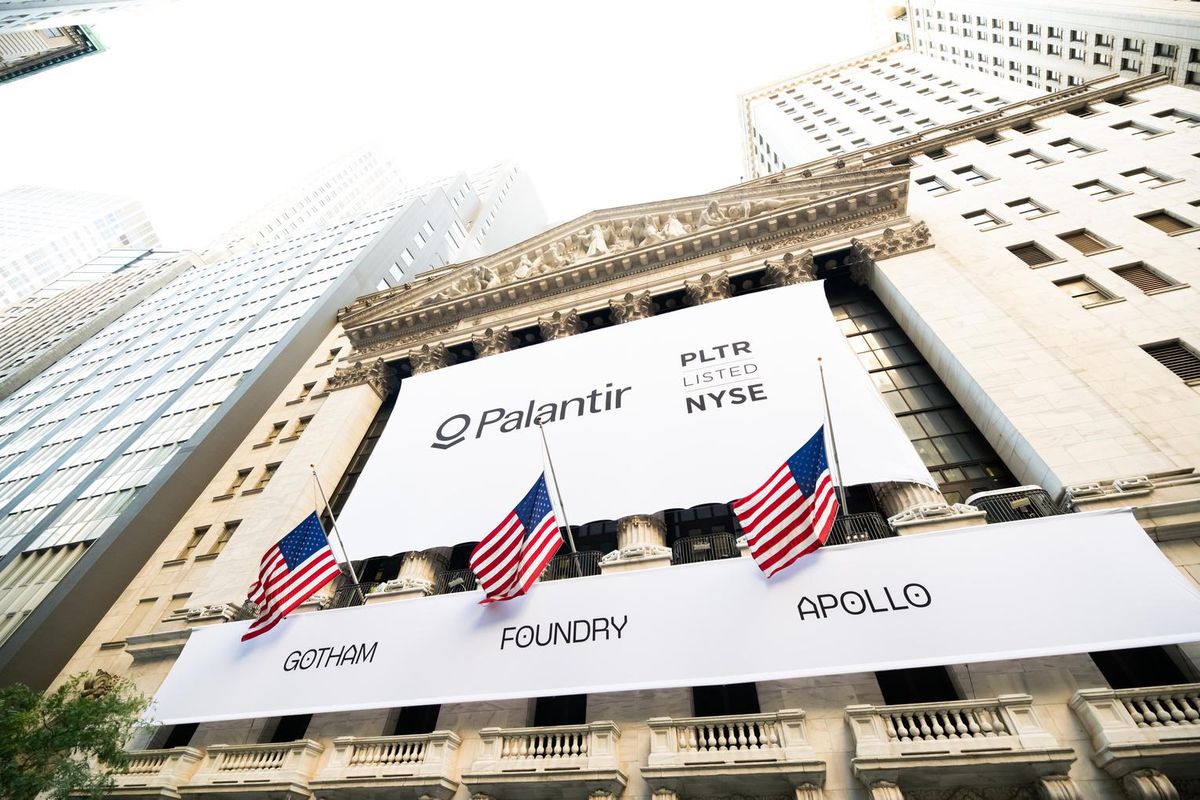NEW YORK, NEW YORK – SEPTEMBER 30: A view outside the New York Stock Exchange as the city continues … [+]
Getty Images
When Denver, Colo.-based Palantir went public at $10 a share in a September 2020 direct listing, I was less than enthusiastic. After all, the company was burning through cash and its governance structure was investor unfriendly.
Since then its shares are up 140% — while the NASDAQ
NDAQ
Was I wrong? One Wall Streeter, Melius Research analyst Carter Copeland, sees the stock as over-valued since his price target of $20, according to Barron’s, is about 17% below where it closed on April 9.
Copeland’s complaint is that Palantir is not growing fast enough to justify its valuation.
Its governance structure ensconces the power of its three co-founders — investor Peter Thiel, CEO Alex Karp and President Stephen Cohen — in what The Journal dubbed ”one of the most aggressive governance structures ever seen.”
I think its relatively modest growth and ongoing cash burn rate make me no more eager to own the stock than I was last October.
Palantir’s Q4 2020 Earnings Report
Palantir — founded in 2003 with capital from investors including the CIA — provides software to help organizations analyze data. For example Palantir’s tools helped Immigration and Customs Enforcement (ICE) conduct deportation raids. These tools include Falcon which “enhances data accessible” to ICE investigators “involving the illegal movement of people into, within, and out of the United States,” AP reported.
Palantir latest earnings report featured better than expected revenues and a big loss. According to CNBC, it lost eight cents a share while revenue of $322 million exceeded the Refinitiv survey number by over $20 million.
Palantir’s government business grew much faster in 2020 than its commercial business. According to its 2020 10K, its total revenue increased 47% from about $743 million to $1,093 million in 2020. Its government business soared 77% to $610 million while its commercial business rose 21% to about $482 million.
For the fourth quarter, Palantir’s government segment popped 85% to $190 million while its commercial segment inched up 4% to $132 million, noted CNBC.
CEO Alex Karp wants Palantir investors with a short-term focus to get lost. As CNBC reported, he said, “We hope those of you on this call who are current investors stay with us and those of you who prefer a more short-term focus, that you choose companies that are more appropriate for you.”
Palantir’s Growth Potential
Palantir has high hopes for growth this year. For all of 2021, Palantir expects revenue growth of more than 30%. For the March 2021-ending quarter, in February Palantir forecast 45% revenue growth to $332 million — $23 million more than the Refinitiv analyst estimate, according to CNBC.
Palantir’s Cash Burn Rate
Palantir’s operations continue to burn through cash at a rapid clip. Since 2018, net cash used by operations increased 662% to about negative $297 million as revenues increased a relatively paltry 84% to nearly $1.1 billion, according to its 2020 10K.
Its cash burn from operations was due to a “net loss of $1.2 billion and changes in net operating assets and liabilities of $454.1 million, offset by non-cash charges of $1.3 billion” — mostly for stock-based compensation, according to its 10K.
Palantir is undergoing changes in the timing of revenue recognition, billings, and collections from its customers.
The net change in operating assets and liabilities “were primarily due to [a] net decrease of $261.8 million in deferred revenue and customer deposits due to the timing of revenue being recognized from amounts billed and collected in prior periods, and an increase in assets of $156 million mostly resulting from accounts receivable driven by the timing of billings to and collections from our customers,” its 10K noted.
Perhaps these changes help explain why on April 1 Palantir doubled to $400 million the amount it can borrow on its revolving loan facility, according to an SEC filing.
Palantir’s Inconsistent Commercial Growth
Palantir’s software applications “tackle data-integration, visualization, and simulation problems for very large, complex organizations,” according to Copeland. He wrote that demand for Palantir’s government application, Gotham, is growing faster and more consistently than for its Foundry application aimed at business customers.
In arguing for a $20 price target for Palantir, he points out that the company is a small player — but that after decades of collecting huge amounts of data, Gotham is well-positioned to help the Pentagon analyze that data and use it to fight wars more efficiently.
He also suggests that Foundry is writing “success stories” with commercial customers — albeit more slowly than anticipated. Copeland suggests that Palantir is aiming to increase its commercial revenue growth with “expanded partnerships and a larger sales force.”
If Palantir’s enterprise marketing efforts result in higher than expected commercial revenue growth, its shares could rise further.
Karp meanwhile plans to sell shares.
He has nearly 70 million stock options granted in 2009 and 2011 which expire this December. He would spend $12.8 million to exercise them — receiving $1.6 billion in stock along with “a mammoth tax bill,” noted Barron’s.
He’ll likely “sell a substantial portion of those shares” to pay that bill.















